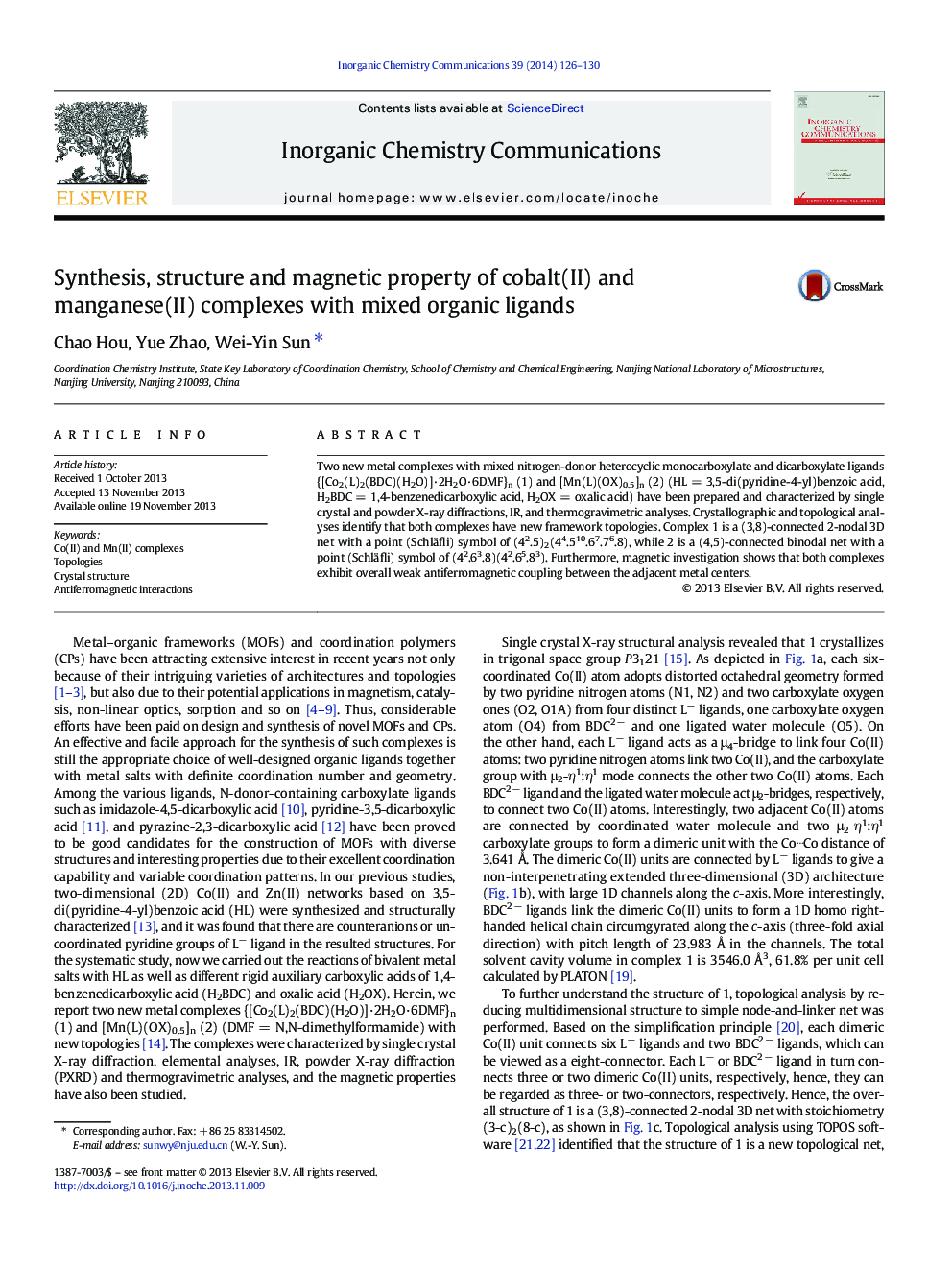| کد مقاله | کد نشریه | سال انتشار | مقاله انگلیسی | نسخه تمام متن |
|---|---|---|---|---|
| 1301699 | 1498951 | 2014 | 5 صفحه PDF | دانلود رایگان |

• Two new metal–organic frameworks with mixed ligands have been obtained.
• The complexes have new network topologies.
• The magnetic properties have been investigated.
Two new metal complexes with mixed nitrogen-donor heterocyclic monocarboxylate and dicarboxylate ligands {[Co2(L)2(BDC)(H2O)]·2H2O·6DMF}n (1) and [Mn(L)(OX)0.5]n (2) (HL = 3,5-di(pyridine-4-yl)benzoic acid, H2BDC = 1,4-benzenedicarboxylic acid, H2OX = oxalic acid) have been prepared and characterized by single crystal and powder X-ray diffractions, IR, and thermogravimetric analyses. Crystallographic and topological analyses identify that both complexes have new framework topologies. Complex 1 is a (3,8)-connected 2-nodal 3D net with a point (Schläfli) symbol of (42.5)2(44.510.67.76.8), while 2 is a (4,5)-connected binodal net with a point (Schläfli) symbol of (42.63.8)(42.65.83). Furthermore, magnetic investigation shows that both complexes exhibit overall weak antiferromagnetic coupling between the adjacent metal centers.
New Co(II) and Mn(II) coordination frameworks {[Co2(L)2(BDC)(H2O)]·2H2O·6DMF}n (1) and [Mn(L)(OX)0.5]n (2) have been prepared by reactions of ligands of 3,5-di(pyridine-4-yl)benzoic acid (HL), 1,4-benzenedicarboxylic acid (H2BDC) and oxalic acid (H2OX) with corresponding metal salt and characterized.Figure optionsDownload as PowerPoint slide
Journal: Inorganic Chemistry Communications - Volume 39, January 2014, Pages 126–130